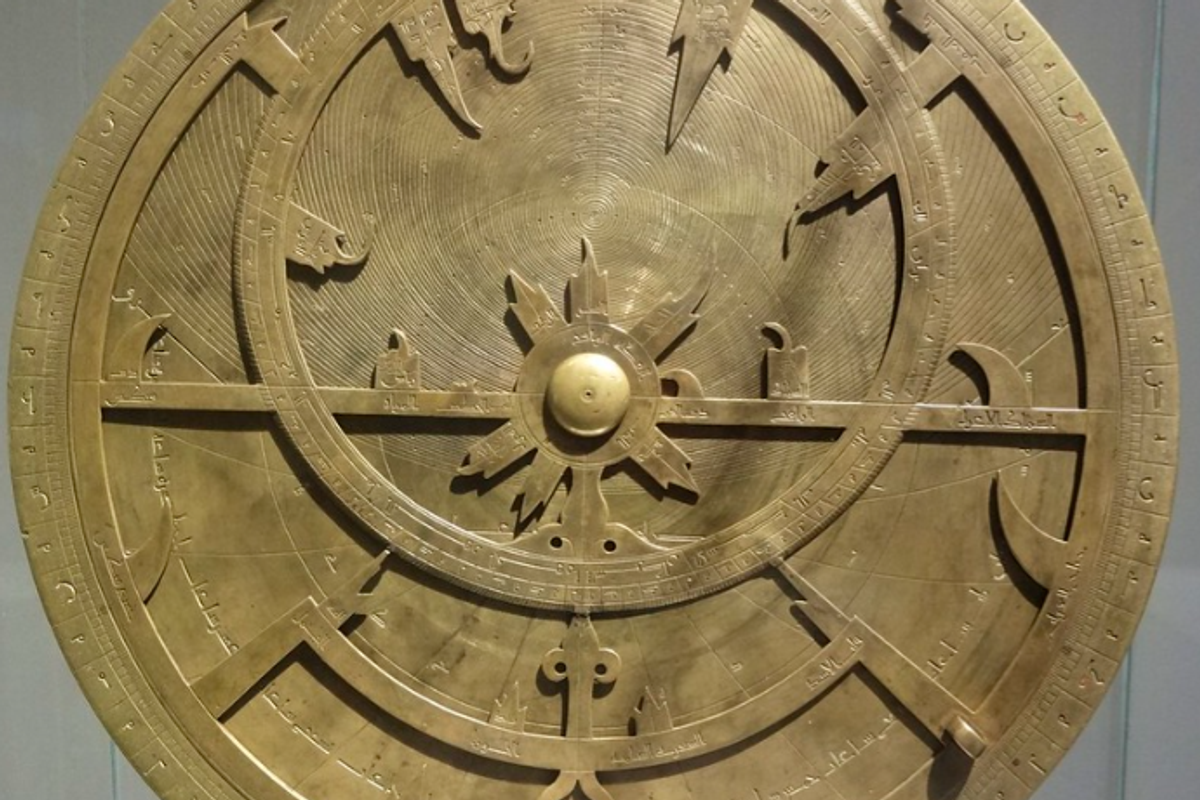
About a year ago, Dr. Federica Gigante, a research associate at Cambridge University, was preparing for a lecture and was looking for a photo of 17th-century Italian nobleman and collector Ludovico Moscardo when she happened upon an image of something exceedingly rare, an ancient Arab astrolabe.
The relic was kept in the same museum as Moscardo’s photo.
According to the University of Cambridge, an astrolabe is an ancient instrument akin to the “world’s first smartphone” that has hundreds of uses, including calculating time and distances, plotting the position of the stars and even making predictions about the future by casting a horoscope.
Dr. Gigante, who is also a former curator of Islamic scientific instruments at Oxford University’s History of Science Museum, traveled to the Fondazione Museo Miniscalchi Erizzo in Verona, Italy three months later to examine the artifact. “I saw it was a lot more ancient than they’d realized,” she told The Guardian. When she began to inspect the astrolabe, she noticed scratches etched in its bronze face and they were no accident.
The u201cVerona Astrolabeu201dnnhttps://t.co/8wTZQ9kKcy
She soon realized that the etchings were in Hebrew, showing that over 900 years ago, Muslims and Jews worked together to exchange scientific ideas. Further examination showed that another Western language was also etched onto the astrolabe.
After comparing the astrolabe to similar instruments, she found that it was from Al-Andalus, the Muslim-ruled area of Spain, in the 11th Century.
Gigante believes that the astrolabe eventually left Spain and circulated among the Jewish diaspora living in Italy.
“There’s an added dedication or signature to the object, that reads: ‘For Isaac, the work of Jonah,’” she said. “They’re both Jewish names so it’s very likely that by then, the astrolabe had got into Jewish ownership. But it’s interesting that it’s written in Arabic. Although it was probably in the hands of some Jews, Arabic was the lingua franca and was used by Jews as much as Muslims and Christians.”
Rare eleventh-century #astrolabe discovery in Verona showcases Islamic-Jewish scientific exchange. It bears #Arabic and #Hebrew inscriptions, reflecting multicultural adaptations. https://t.co/d74D333xoP #archaeology
Just as smartphones need updates over time, the astrolabe had corrections and updates etched on its surface throughout history. “The Verona astrolabe underwent many modifications, additions, and adaptations as it changed hands. At least three separate users felt the need to add translations and corrections to this object, two using Hebrew and one using a Western language,” Dr. Gigante said.
It is believed that the astrolabe entered the collection of Ludovico Moscardo (1611 to 1681), a nobleman from Verona, and later transitioned to the Miniscalchi family through marriage. In 1990, this family established the Fondazione Museo Miniscalchi-Erizzo to safeguard their collections.
At a time when tensions are high between Muslims and Jews, it’s touching to learn of an ancient artifact that circulated among both groups as a method of sharing knowledge. “We know that in 11th-century Spain, Jews and Muslims and Christians were working alongside each other, especially in the scientific media, and that many Jewish scientists were sponsored and patronized by Muslim rulers with no concern for their religion,” Dr. Gigante said. “This object is Islamic, Jewish and European, they can’t be separated.”

